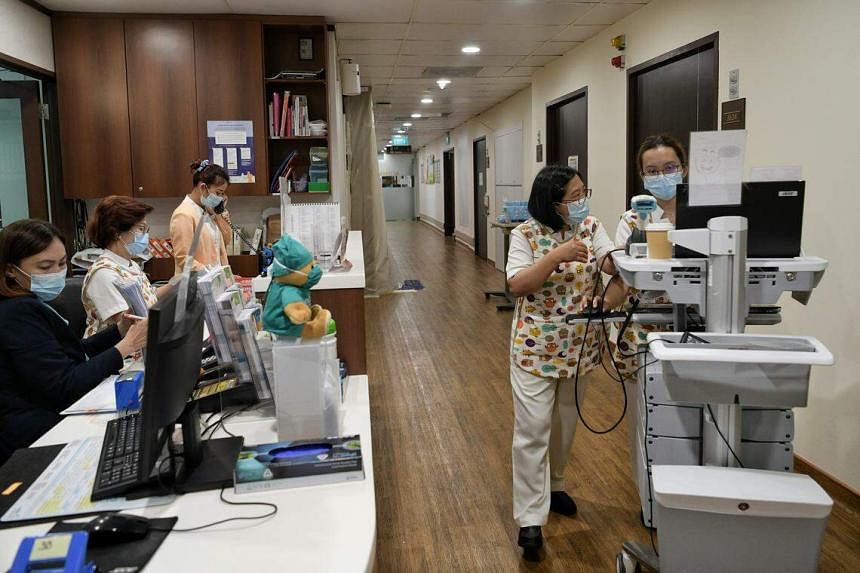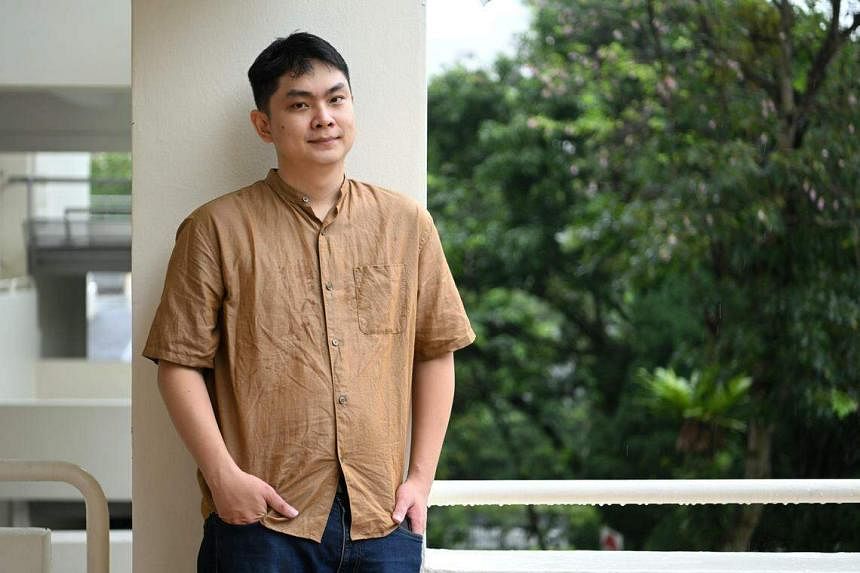SINGAPORE – On March 15, Mr Robert Putra Sampurna, 34, felt a sudden sharp pain in his abdomen while driving in his home town of Surabaya, Indonesia.
In spite of the pain, he drove himself to the nearest hospital where “I just threw my car keys to the valet and lay down on the floor”.
He said the 10-minute drive to the hospital was the longest 10 minutes of his life and, by the time he arrived, he could hardly move for the pain.
He was stretchered into the emergency department where a CT scan showed he had stones in the ureter, the tube that takes the urine from the kidneys to the bladder.
He took painkillers, bought the last ticket on the last flight to Singapore that same night (his brother, who was accompanying him, had to fly over the following day as that earlier flight was full).
A doctor at Gleneagles Hospital saw him the next morning and a procedure was done on March 17.
Mr Sampurna, who owns a firm that imports power tools from China, told The Straits Times that he was willing to endure the discomfort a little longer in order to get treated in Singapore.
He is among the tens of thousands of foreign patients who are again flocking to Singapore for medical care in private hospitals after Covid-19 restrictions on travel were lifted.
Prior to the pandemic, about 40,000 foreigners used to come to Singapore each month for medical care, ranging from health screening to surgery and chemotherapy.
Singapore opened its border in phases, with vaccinated travel lanes and designated flights for people from low-risk countries from September 2021, and lifted all restrictions in February 2023.
A spokesman for Raffles Hospital said the number of foreign patients seen at the hospital is back to that in pre-Covid-19 days, accounting for 25 per cent of its patient load. The majority of them are from Indonesia, followed closely by China and Indochina.
The IHH group, which runs the two Mount Elizabeth hospitals, Gleneagles Hospital and Parkway East Hospital, said that there was a big surge in patients for several months in 2022.

Mr Jeffrey Law, IHH Singapore’s chief commercial officer, said: “There was a huge influx from April to September last year. The hospitals were seeing 30 per cent more and it was quite a mad rush.”
The numbers have since come down. Mr Law said they are now lower than in pre-Covid-19 years, but the revenue is higher. Foreigners now account for 20 per cent of IHH hospitals’ patients, but 30 per cent of the revenue.
He said this is because these patients tend to be sicker or have more complex problems, as a result of pandemic-delayed treatment.
Some patients from Bangladesh were practically rushed to hospital, sometimes to intensive care, straight from the airport, he added.
There are also patients who come here for a “second treatment”, said Mr Law, when the treatment they received in their home country does not resolve the problem, or in some cases, makes matters worse because the diagnosis is wrong.
Mr Sampurna’s mother died at the age of 58 from ovarian cancer during the pandemic lockdown. She was unable to travel to Singapore for treatment.
He said: “She saw so many doctors and not a single one diagnosed her with ovarian cancer. A couple of doctors suspected cancer, but, by the time they did, it was already stage four cancer and had spread to her lungs.”
A couple of years ago, one of his cousins had the same problem he had – calculus of the ureter. Due to the lockdown, he was treated in Indonesia. Some months later, the pain reoccurred. He came to Singapore and found that the treatment in Indonesia had scarred the ureter and blocked parts of it. It took three sessions here to fix the problem.
That was why, even though he was in pain, Mr Sampurna decided to come here for treatment. Furthermore, his health insurance paid for treatment anywhere in the world.
His family has been coming to Singapore for medical treatment since he was young. He remembers coming to get his tonsils removed. “Health is important, and we want the best,” he said.
Mr Law said that there is a growing trend of Indonesians arriving with health insurance to pay for their treatment in Singapore. Previously, they paid for the treatment themselves.
About 30 per cent to 40 per cent of Indonesian patients at the IHH hospitals have insurance, he said. “They come for all sorts of treatments, the whole spectrum, from day surgery and scopes to cancer and heart problems.”
Before Covid-19 hit, the percentage of such patients was in the single digits, he noted.
The influx of foreign patients has added to the bed crunch in the private sector. After his procedure, Mr Sampurna could not be hospitalised for lack of a bed. Since he needed to be in hospital for only a day, he decided to leave. He has relatives here and he stayed the night with them, returning the following day for the follow-up.
Mr Law said the shortage of nurses has resulted in the mothballing of about 10 per cent of IHH’s slightly more than 1,000 beds.
Although the public hospitals are also facing a massive bed crunch, it is not caused by foreign patients, who make up only 0.5 per cent of patients, said the Ministry of Health.


